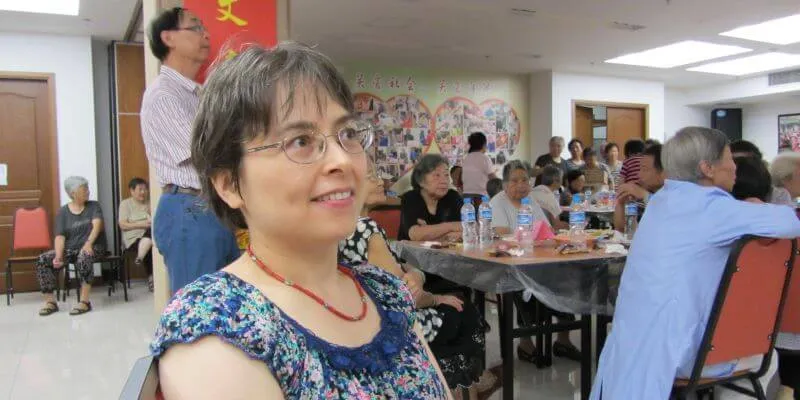There are a number of stereotypes about aging in East Asia, according to Jeanne Shea, an Anthropology professor at the University of Vermont and lead editor of the new book Beyond Filial Piety: Rethinking Aging and Caregiving in Contemporary East Asian Societies, co-edited with colleagues Katrina Moore and Hong Zhang.
“Some will tell you that East Asian countries are paradises for the aged. Others will speak of the impending disaster of countries without enough people of ‘working age.’ Neither of these reflects the true reality that elderly Asians experience,” Shea said.
But one thing is true, Asian countries are, on average, getting older, Shea said. Advances in health care, rising female participation in the workforce, and increased contraceptive access have led to a situation where people are living longer and having fewer children. This has resulted in a significantly greater percentage of the population being elderly (65 years or older).
Western countries will likely be in a similar position before long, Shea said. We should learn from the experiences of elderly people in these East Asian countries.
“We must recognize that although some of them need support and/or care, the elderly should not be considered a burden on society,” Shea said. “Older adults formed the societies we live in today, and they continue to contribute to them, especially through informal labor and caregiving for other older adults and for grandchildren. One day, we too will be old, and we need to go beyond stereotypes to recognize how older adults are part of a reciprocal web, both giving and receiving care.”
One approach to caring for the elderly that Shea and her co-editors explore is the concept of filial piety, an idea first put forth by the Chinese philosopher Confucius. At the heart of the approach is that idea that adult children should always respect, care for, support, and obey their aging parents, Shea said.
In premodern times, filial piety was critical to supporting the elderly in East Asian societies. There were few if any other support mechanisms for them. While the ideas of filial piety, particularly in relation to respect, are still recognized, the fourteen chapters in Shea’s edited volume illustrate changes in modern reality in China, Taiwan, Hong Kong, Singapore, Japan, and South Korea.
“It weighs heavily on people in East Asian societies today as a kind of ideal that really doesn’t fit very well with a lot of contemporary social changes,” Shea said.
Government, community, and private-run programs caring for people in their twilight years are becoming increasingly popular, reducing some of the concerns about support for the elderly. And at the same time, parents want their children to live independently and focus on their own careers and the futures of their grandchildren.
“In more recent decades,” Shea explained, “there’s been pensions and there’s been health care and various kinds of social welfare programs, so not all elders need their children to support them. Not all elders want their children to support them.”
Health care advances have in many ways changed what it means to be elderly. Given better prevention and treatment, overall seniors are healthier than ever before, Shea said.
It is important to see aging societies and old people as resources, not just people in need of care. It is common to find elderly grandparents caring for their grandchildren while the parents are working, Shea said. Many older adults continue to perform volunteer work important for their communities, and a substantial number remain in the workforce, often informally and part-time, in order to help make ends meet.
“It is false to say that the elderly do not contribute to society or that they are a drain on resources when they are taking on these important responsibilities,” Shea said.
Despite changes in society, the elderly in East Asian countries experience some of the same isolation and challenges as the elderly in the US and elsewhere. Some elderly people suffer from the psychological impact of not feeling as capable or valued as they used to be, Shea said.
In fact, Shea found it striking how often the elderly caregivers she visited would stop taking photos of themselves and their spouses.
“Oftentimes old people don’t think to take a photo of themselves,” Shea said, “or their children don’t think to take a picture of them because they’re old and not considered photogenic anymore.”
So, as a side project, Professor Shea started taking photos of the elderly couples she was studying in her research on spousal caregiving in Shanghai, China. The kind of joy she saw in these people when she did something as simple as take their portrait with their spouse and give them a copy was immeasurable. Some even ended up using the portrait for an ancestor photo after a spouse passed away.
“More and more in East Asia, people are thinking that it is important to go beyond filial piety, beyond respect, care, support, and obedience, to an area that Confucianism did not emphasize as much: affection and love, “ Shea said.
Shea, who is also the Director of the Health and Society Program and leads the Global Health Concentration in Anthropology at UVM, has spent many years conducting research in China between the 1980s and the present and has also traveled to Taiwan, Hong Kong, and South Korea.
Nicholas Kelm is a student studying English and Philosophy at the University of Vermont. He is currently working as an editor for the Center for Research on Vermont’s Newsletter.
